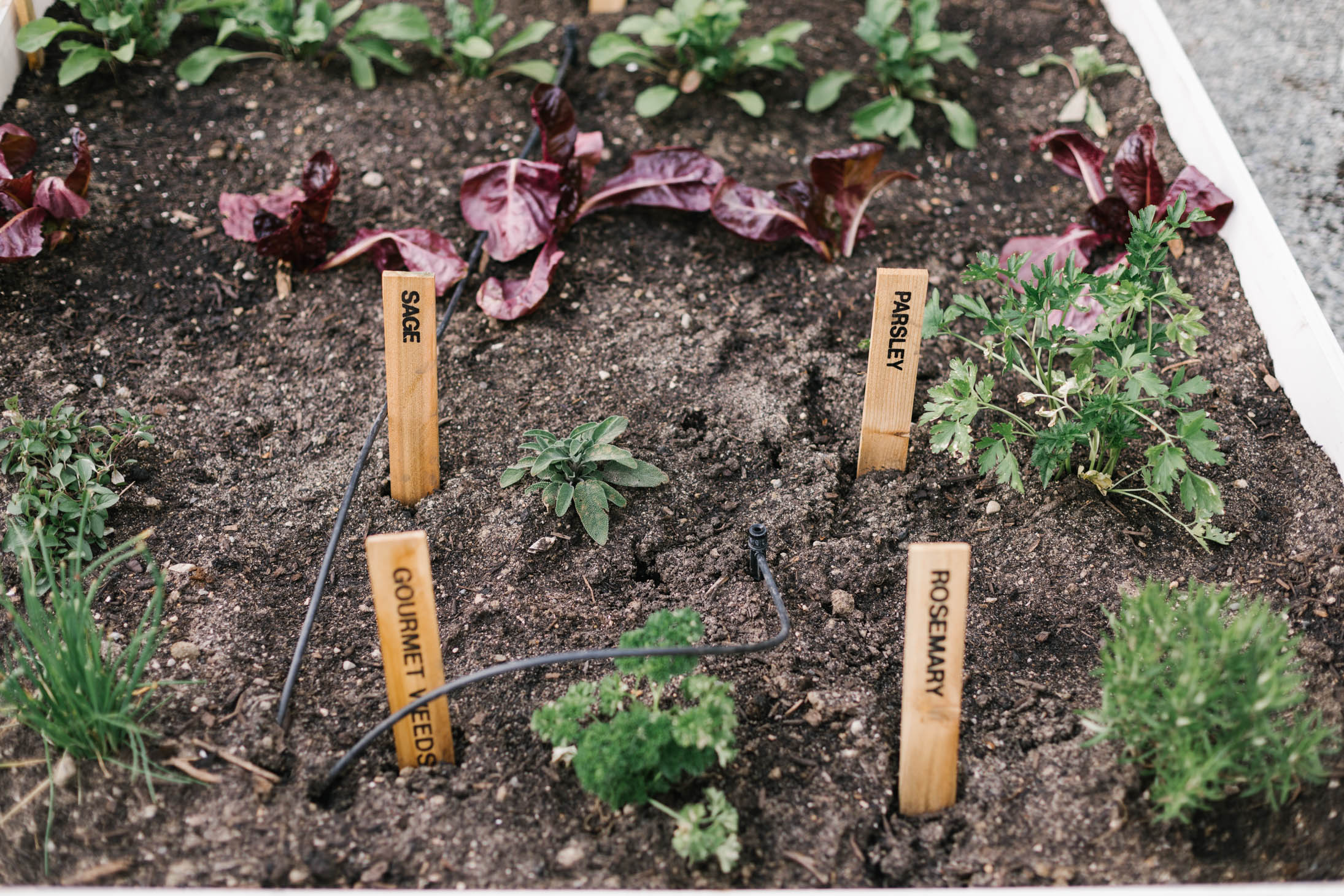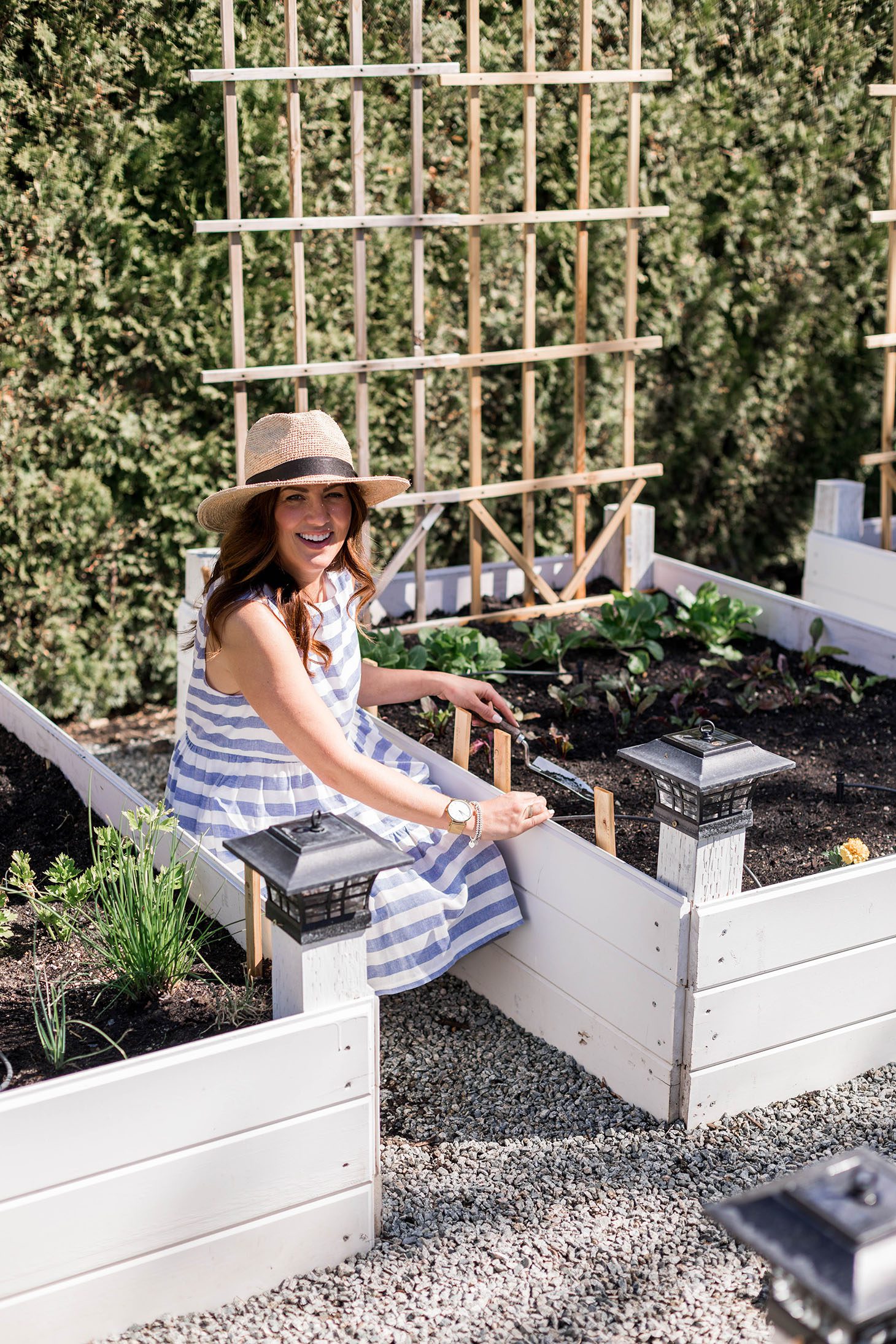Hi everyone! With the gardening season right around the corner, I wanted to share my 5 veggie garden must-knows, and if you are new around here a few years ago, I shared my favourite gardening inspo, hacks, and tips from the experts at Bylands Garden Centre, check it out here!! It is such a great resource for beginner, intermediate and even advanced gardeners! Well, that blog was such a hit with all of my fellow garden lovers out there that I decided I would do a blog post that highlights some specific veggie garden must-knows!
I have learned a TON of stuff over the last few years about gardening (most of it through trial and error!) so I wanted to share some of the best must know tips with you and to provide you with even MORE knowledge, I asked John Byland from the amazing team at Bylands (with 40+ years of gardening experience!) to elaborate on them for me which I’ll share with you now!

1. Timing
It’s always best to wait until the last frost is done PRIOR to planting. A couple of years ago, I was so eager to get our garden started that I didn’t wait long enough and we ended up losing our basil and tomatoes! WHOOPS!! Lesson learned! So, you want to make sure you’re either starting your seedlings indoors or have patience and wait until it’s warm enough outside.
John from Bylands suggests the following schedule when it comes to optimal planting times in the Okanagan!
Late March – Early May (early season crops)
Radishes
Lettuce
Spinach
Onions,
Potatoes
Cauliflower
Kale
Broccoli
Beets
Carrots
Cabbage
Arugula
Early / Mid-May Onwards (when danger of frost has passed)
Tomatoes
Cucumbers
Melons
Beans
Peppers
Eggplants
Squash
Zucchini
Corn
July
Anything you planted earlier can be repeated for a fall harvest (other than onions and potatoes)
Note – don’t try to plant cauliflower, broccoli, and cabbage in June/early July for summer harvest because they don’t do well in the hot Okanagan temperatures (they’ll just bolt!).
Fall
Garlic (for the following year!)



2. Thinning
In 2018 I was a bit greedy when it came to seeding, I basically threw in a handful of seeds and everything grew in and it got REALLY crowded! Last year, I was more conscious about thinning. I paid attention to the seeds that weren’t taking as well and started to thin them out in order to make ample space for the strong seedlings.
When I asked the team at Bylands about this, John mentioned that you can avoid the need for thinning by spreading out the seeds better when you are planting (more about this below)! One item that is common to thin is beets. The way to do these is to wait until they grow 2-3 inches tall, space them to 2 inches and use the leaves for microgreens! For other items like cress, arugula, etc, just cut back instead of thinning.

3. Spacing
I would 100% suggest to follow the spacing guidelines on the back of your seed package to ensure you’re not planting everything too close together! However, John suggests (as a rule of thumb!) to aim for about 12 -18 inches between different plants. 12 inches for greens like lettuces, arugula, onions, carrots, beets, etc, and 18 inches to two feet inches for items like tomatoes, cabbage, etc. It really depends on how much space you have and how jam-packed you want your garden!

4. Composting
We just started composting last year and so far I love it but there really is quite a bit to know about it … in fact, depending on the composter you have, your compost could be ready anywhere from a few weeks to a few YEARS so it’s best to really dive into the composting world and soak up as much info as you can! I’m so excited that I finally was able to add some compost to our garden this year!
John from Bylands suggests optimizing the soil by mixing some good quality topsoil with your current soil or generously apply compost to your garden before planting. His rule of thumb is to apply 1” (2.5 cm) of compost on top of your soil before planting (if the soil is really hard or sandy, apply 2” or 5 cm) – and mix together before planting!

5. Watering & Weeding
Every morning I make sure to spend time in the garden, I make myself a coffee and pop out to water everything and prune the plants! There is something so therapeutic about starting my day off this way!
If this is something you can’t squeeze into your morning, John suggests building it into your routine somewhere throughout the day. For instance, before settling into the house for the evening when you get home from work, before you make dinner, etc. 15 minutes of watering and weeding, even for big gardens, can be enough on a day to day basis!

There you have it! I hope you found this blog helpful! If you have any must-know garden tips, please feel free to share them in the comments below!
xo
Jilly





Thank you for these hints Jillian. I never had a vegetable garden! Looking forward to the results.
Hi,
Your gardening web blog is reallyl Thanks for sharing your amazing blog.
Thanks. GardenHubs